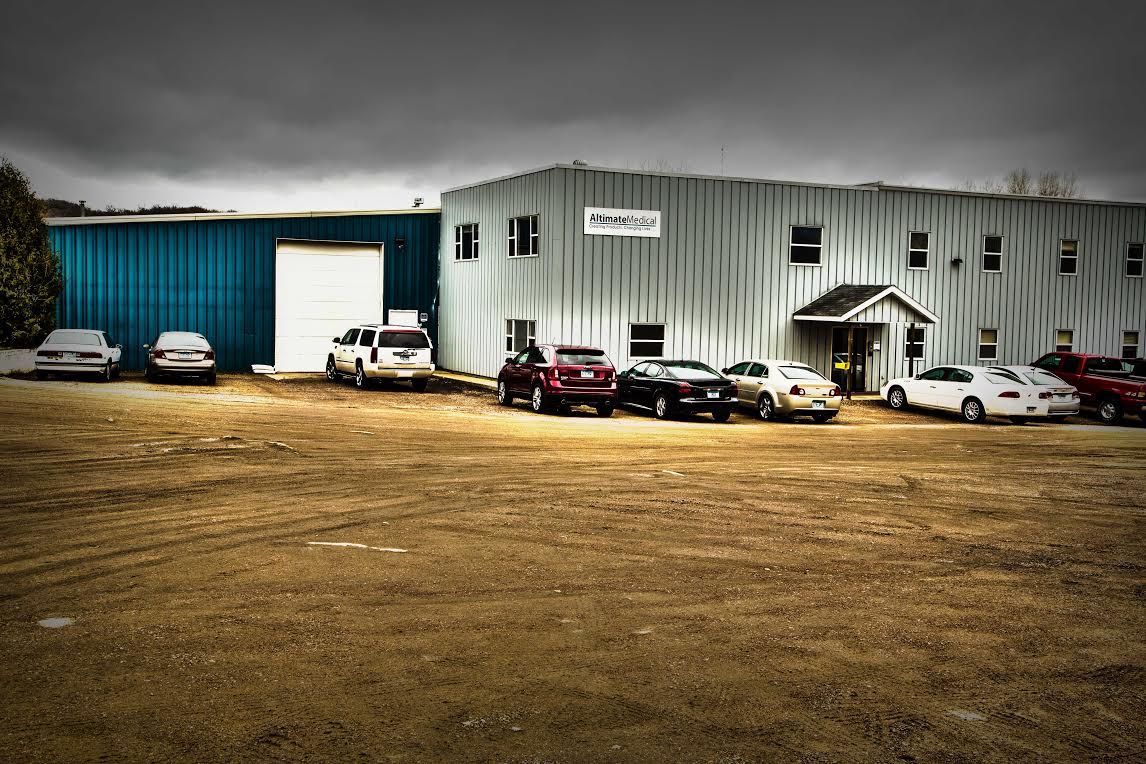One hundred miles southwest of the bustling suburbs of the Twin cities is the town of Morton, Minnesota.
A 2-hour drive down a series of two-lane highways through a mix of farmland, tundra, and open space, takes you to the tiny burg of less than 500 people. Morton boasts just a handful of intersections and corner stores, but a block off Main Street, in a gravel driveway at the foot of a small hill, sits a modest size building with aluminum siding. It’s the headquarters of Altimate Medical Inc., which does business under the more familiar name EasyStand.
Nestled alongside a grain elevator and a seemingly abandoned railroad track, it’s not exactly the kind of place you expect to find a company making a global impact in the medical field. But, inside, EasyStand’s team of 40 employees design, develop, manufacture, and ship state-of-the-art standing frames to medical facilities and to people living with paralysis around the world. “I don’t think many people in this area even know what we do here,” said Kyle Smith, EasyStand Marketing Manager. “I’m from the area and didn’t fully realize the impact we had until I started working here.”

Every day 30-40 EasyStand standing frames are built from scratch, assembled, tested, disassembled and shipped from Morton to rehabilitation hospitals, physical therapy clinics, skilled nursing centers, and individual buyers around the world.
Not bad for a small-town company started in the 1980s by Alan Tholkes, a C6-7 quadriplegic. Tholkes began tinkering with contraptions in a garage in order to create a device that could help him spend time out of his wheelchair.
“Many people don’t understand the toll that being confined to a wheelchair can have on the body," Smith said. “Paralyzed individuals must spend time out of a seated position on a regular basis. Being upright puts weight through the body, which maintains bone density, prevents muscle contracture, helps with circulation, and much more.”
Paralysis is more than losing motor function.
A large part of living with paralysis is learning to maintain a body that is no longer in full communication with the brain. Paralyzed limbs don’t simply become useless dangling appendages. Muscles become tight and spastic. They need to be stretched and re-positioned regularly to avoid locking up. Skin breakdown and pressure sores are a constant threat when too much time is spent in the same position, and bodily functions like digestion and circulation are all affected when the body remains sedentary.
EasyStand products provide sit-to-stand support.
Their frames feature an adjustable seat bottom that rises vertically to brace the waist as the unit lifts the body to standing position. Knee and hip supports lock to stabilize the lower body. Their most versatile unit, the EasyStand Evolv, is also EasyStand’s best seller. According to Smith, the Evolv is often the best option for individual home use. A large chest level tray lets users work on a computer, read, or browse the internet while standing. More advanced features include a mobile unit that users with hand and arm function can push and maneuver around their home while standing.
 The EasyStand Glider is another popular model. The Glider enables active standing by providing arm handles and lower body range of motion. This lets users move the arm handles to create reciprocal movement in the legs, which makes a cardio workout possible while in position.
The EasyStand Glider is another popular model. The Glider enables active standing by providing arm handles and lower body range of motion. This lets users move the arm handles to create reciprocal movement in the legs, which makes a cardio workout possible while in position.
Standing frames have proven to benefit people that use them in their homes, and have become an important part of the rehabilitation process as well. Spinal cord injuries above the T1 level may have extreme blood pressure changes. Orthostatic Hypotension (dropping blood pressure) can hit when the body is upright. Standing frames are used to slowly re-acclimate the body to being upright again.
Following my C4 injury in 2010, I was first placed in a standing frame one month after my accident. I could only remain upright for a few seconds, but it marked a significant point in the recovery process. Over time, tolerance builds as the body adjusts.
Standing frames are, however, relatively expensive. A price range of $2,200-$6,000 limits the number of people that can afford them for in-home use. EasyStand is often able to work with insurance companies to secure financing for some people, but like most insurance appeals, the pleading can be difficult.
Unfortunately, in the same way that long-term rehabilitation is limited for those recovering from neurologic injury, so too are access to many of the resources like standing frames that are needed after “rehabilitation” is over.
Living with paralysis is a battle. It's an ongoing process that requires life-long maintenance.
A major flaw in most communities is the lack of specialized health and wellness centers for the disabled, where equipment like an EasyStand can be accessed by those not fortunate enough to have a unit in there home.
As difficult as it may seem for the able-bodied population to maintain a healthy and active lifestyle, the struggle is multiplied 10-fold for the disabled. This is the crux of the NeuroHope vision: Long-term rehabilitation and accessible wellness for all of us living with neurologic injury.
An EasyStand is one of the three core equipment pieces needed for NeuroHope before we begin operation in early 2015.
We need your help to make it happen:



